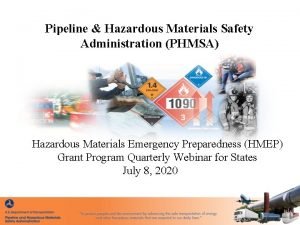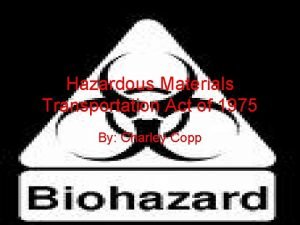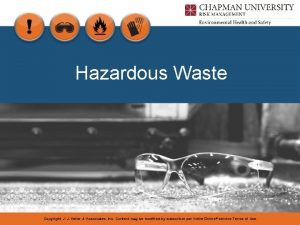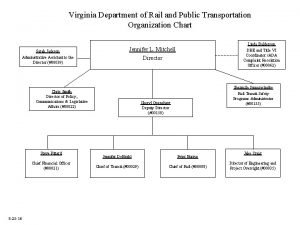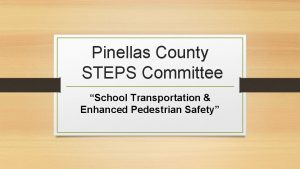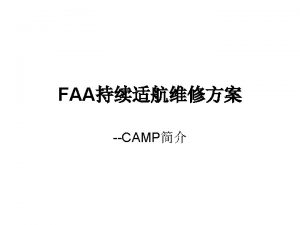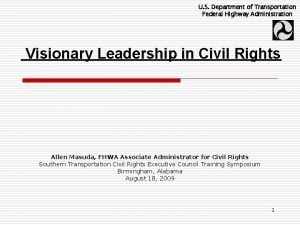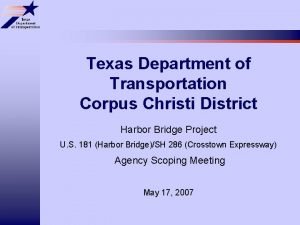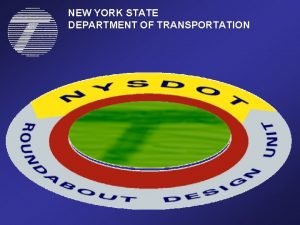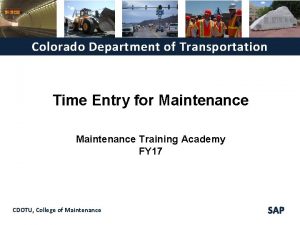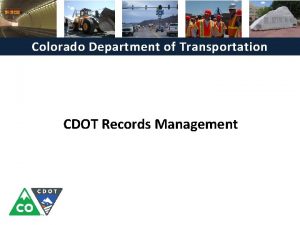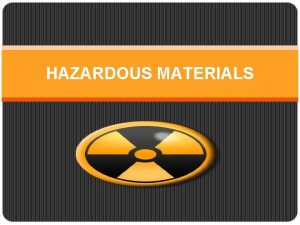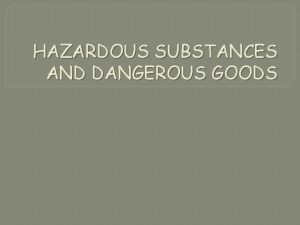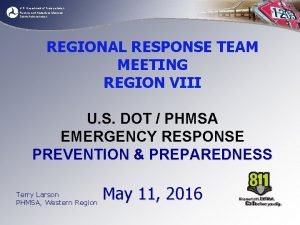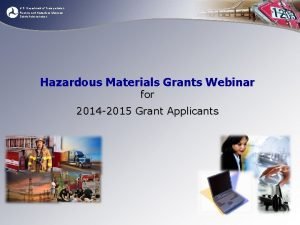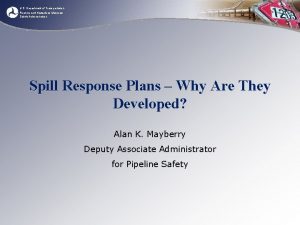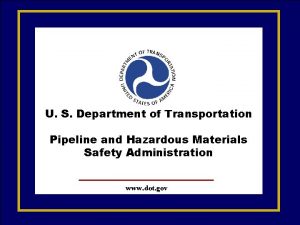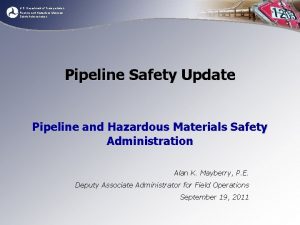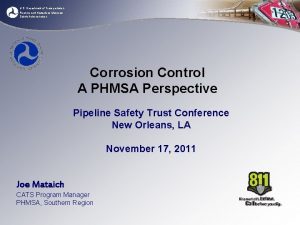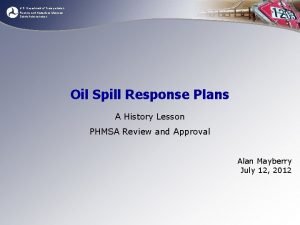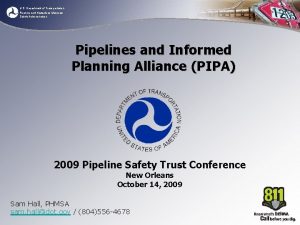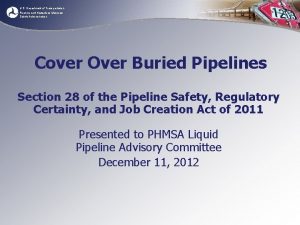U S Department of Transportation Pipeline and Hazardous

















- Slides: 17

U. S. Department of Transportation Pipeline and Hazardous Materials Safety Administration Corrosion Control A PHMSA Perspective Pipeline Safety Trust Conference New Orleans, LA November 17, 2011 Joe Mataich CATS Program Manager PHMSA, Southern Region

U. S. Department of Transportation Pipeline and Hazardous Materials Safety Administration Definition of Corrosion The Deterioration of a Material, Usually a Metal, that Results from a Reaction with its Environment. Galvanic Corrosion of a Metal Occurs because of an Electrical Contact with a More Noble (Positive) Metal or Non-metallic Conductor in a Corrosive Electrolyte. -2 -

U. S. Department of Transportation Pipeline and Hazardous Materials Safety Administration Basic Corrosion Cell Metallic Path Fe Fe Fe Ionic Path -3 -

4

U. S. Department of Transportation Pipeline and Hazardous Materials Safety Administration Pipeline Corrosion Metallic Path a e r A c i d o An Cathod ic Area -5 -

U. S. Department of Transportation Pipeline and Hazardous Materials Safety Administration Cathodic Protection Anode Cathode -6 -

Galvanic Anode CP System Relies on potential difference between steel and anode (Mg, Zn, Al) -7 -

Impressed Current Cathodic Protection Has DC power source (rectifier) 8

Pipe-to-Soil Potential Measurement Used to evaluate adequacy of Cathodic Protection Voltmeter 975 Reference electrode (Cu/Cu. SO 4) lin e p i p d n ou r g r e d n u e -9 -

U. S. Department of Transportation Pipeline and Hazardous Materials Safety Administration Cathodic Protection Criteria • § 192. 463 Requires Cathodic Protection to a Level that Complies with Appendix D of Part 192 • § 195. 571 Requires Cathodic Protection to a Level that Complies with section 6. 2 and 6. 3 of NACE SP 0169 -2007 - 10 -

U. S. Department of Transportation Pipeline and Hazardous Materials Safety Administration Cathodic Protection Criteria • • • - 850 m. V 100 m. V Polarization Negative 300 m. V Shift Net Protective Current E log I * Gas and Liquid * Gas Only - 11 -

U. S. Department of Transportation Pipeline and Hazardous Materials Safety Administration Regulatory Inspections • All PHMSA and State Inspectors are trained – PHMSA T&Q Corrosion Course in OKC • Corrosion Control Requirements are checked during inspections – Records – Field Inspections - 12 -

U. S. Department of Transportation Pipeline and Hazardous Materials Safety Administration Cathodic Protection Monitoring Regulatory Requirements • Pipe-to-Soil Potentials measured once per calendar year, not to exceed 15 months • Rectifiers checked six times per calendar year, not to exceed 2. 5 months - 13 -

U. S. Department of Transportation Pipeline and Hazardous Materials Safety Administration What can go Wrong? • Pipe-to-Soil Potentials/Rectifier tests – Measurement error – Improperly calibrated measurement equipment – Broken or defective test leads • How PHMSA addresses these – Both are OQ Covered Tasks – PHMSA/State Inspectors trained to identify deficiencies – Potentials and Rectifiers are checked during PHMSA/State field inspections - 14 -

Shielding of CP Current is blocked by disbonded coating, rocks etc. Addressed in HCA’s through Integrity Management - 15 -

Interference Currents DC currents from foreign rectifier, transit systems etc. Addressed by regulatory requirements for interference mitigation program - 16 -

U. S. Department of Transportation Pipeline and Hazardous Materials Safety Administration Questions? - 17 -
 Pipeline and hazardous materials administration
Pipeline and hazardous materials administration Hazardous materials transportation act of 1975
Hazardous materials transportation act of 1975 Keller hazardous waste disposal
Keller hazardous waste disposal Difference between linear and nonlinear pipeline
Difference between linear and nonlinear pipeline Scalar pipeline
Scalar pipeline Virginia department of rail and public transportation
Virginia department of rail and public transportation Massachusetts department of transportation
Massachusetts department of transportation Montana department of transportation
Montana department of transportation Pinellas county school bus transportation
Pinellas county school bus transportation Department of transportation
Department of transportation Department of transportation
Department of transportation Maricopa county department of transportation
Maricopa county department of transportation Texas department of transportation corpus christi
Texas department of transportation corpus christi How many roundabouts in new york
How many roundabouts in new york Department of transportation
Department of transportation 417 toll rates
417 toll rates Department of transportation
Department of transportation Department of transportation
Department of transportation
